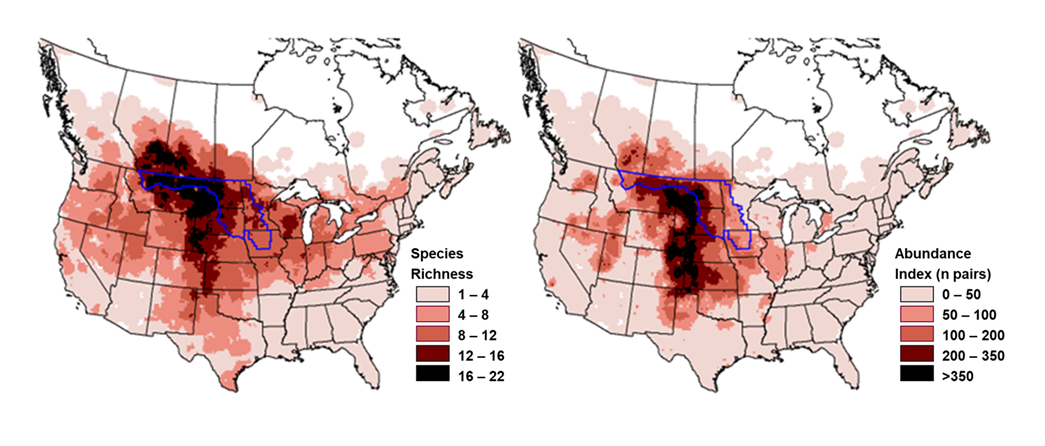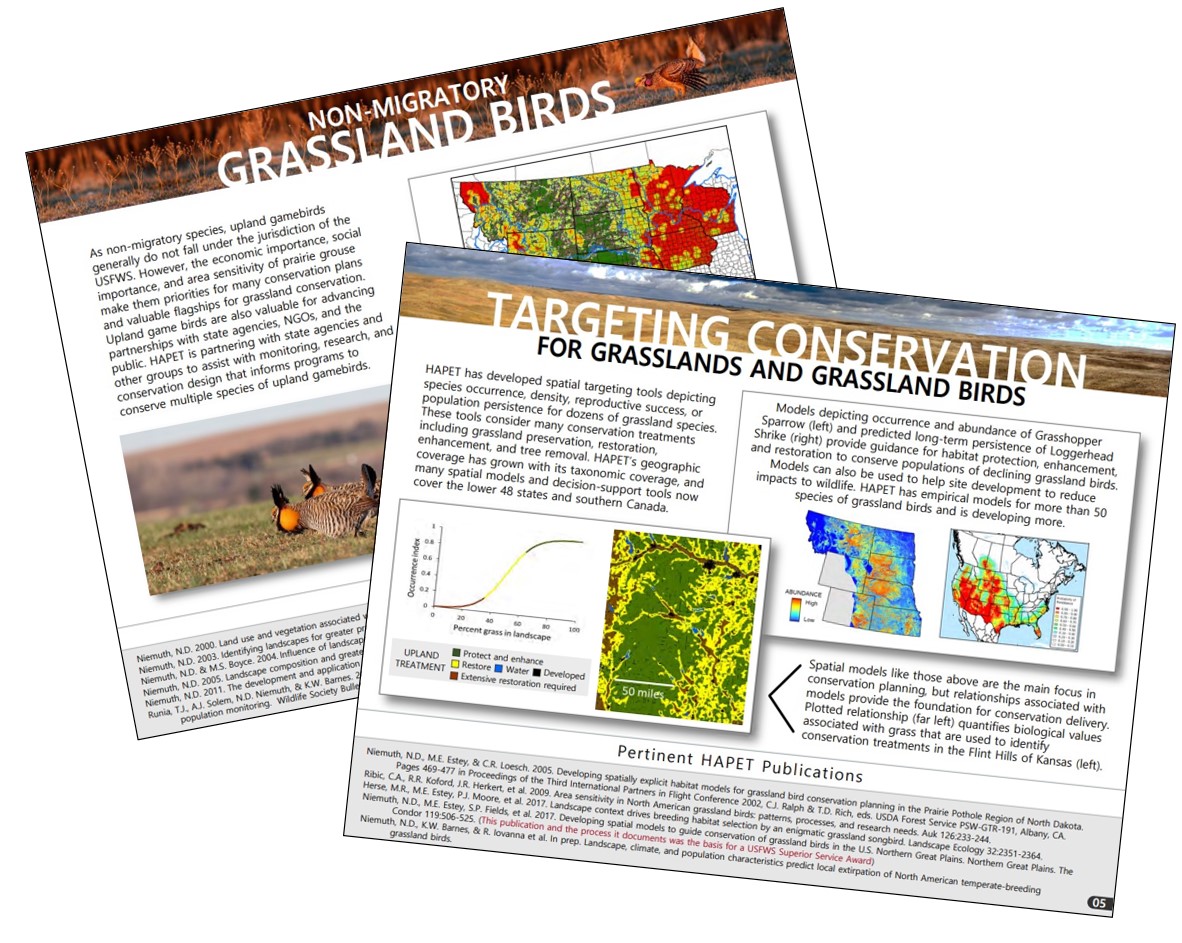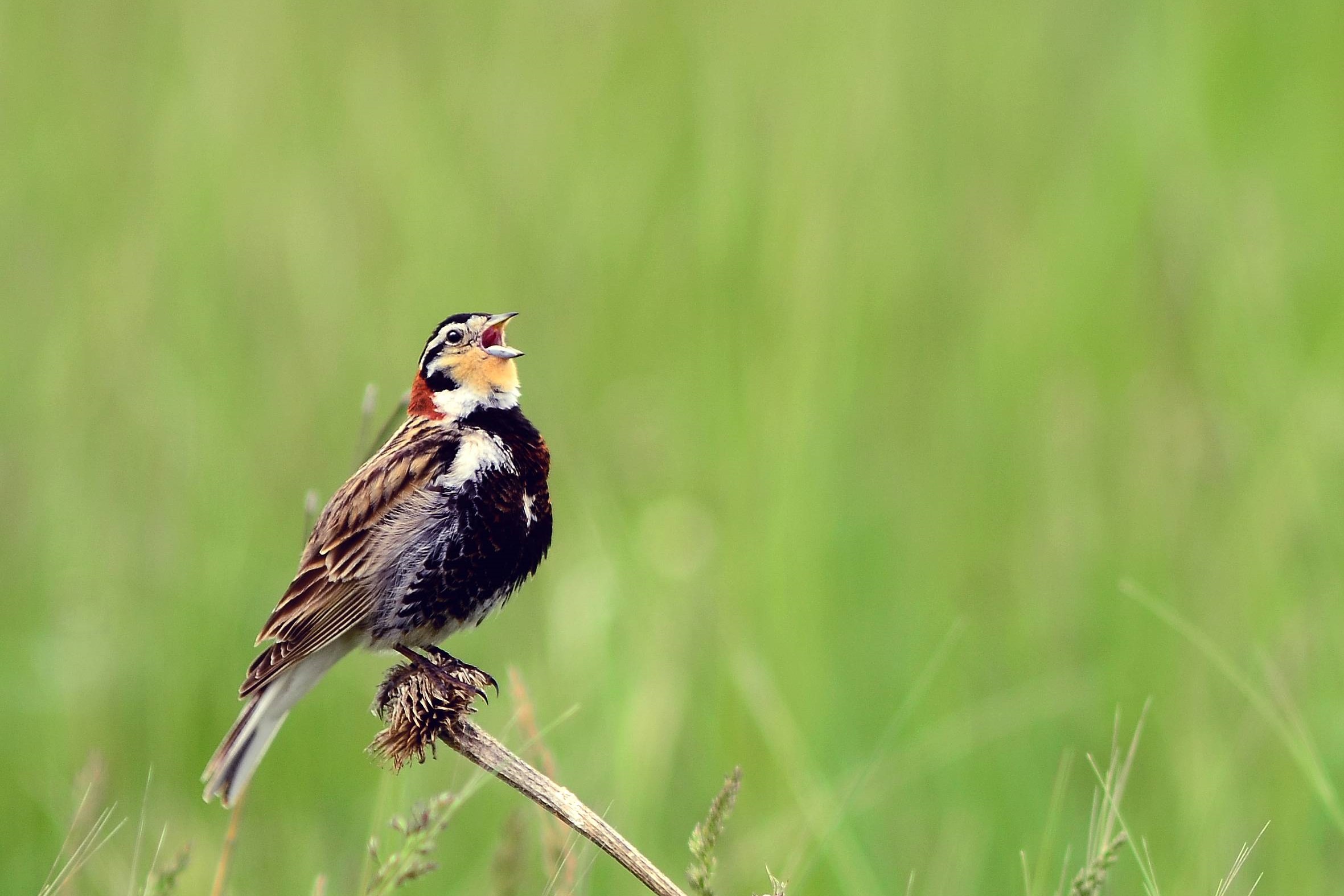We’ve all seen the reports: grassland birds are declining more rapidly and more consistently than birds from any other habitat group in North America. These changes are particularly important in the Prairie Pothole Region, which has the greatest number of grassland bird species and some of the highest densities of grassland birds in North America (Figure).

Widely known as the “duck factory” of North America, the pothole portion of the Prairie Pothole Region has received much attention over the years with extensive conservation efforts for wetlands and wetland-dependent species. The “prairie” portion of the Prairie Pothole Region has received less attention in the past, but that is changing as populations of grassland-dependent species continue to decline as grasslands are converted to other uses. Unfortunately, multiple studies have shown that some of the highest rates and amounts of grassland loss are occurring in the PPJV. Therefore, conservation partners across the PPJV are focusing their attention on grasslands in an attempt to stem grassland loss and improve the status of grassland species.
Conservation of grassland benefits more than grassland songbirds such as meadowlarks, Sprague’s pipit, and Baird’s sparrow. More than 90% of waterfowl in the PPJV nest in grasslands, and reproductive success of grassland-nesting birds, including ducks, generally increases as the amount of grass in the landscape increases. Grasslands also improve water quality, reduce runoff and flooding, provide forage for cattle, sequester carbon, provide habitat for many non-bird species, and provide a land base for many types of outdoor recreation such as hunting, bird watching, and horseback riding.
The Fish and Wildlife Service’s Habitat and Population Evaluation Team (HAPET) offers a variety of spatial products to help partners increase conservation benefits and meet their grassland conservation goals. Models predicting species occurrence or numbers are some of HAPET’s most recognizable products, but they are often only the start in developing a comprehensive conservation strategy. Relationships identified by models are the foundation of a variety of decision-support tools that help identify best places to restore habitat, remove trees, or implement other conservation measures. HAPET has also developed models and decision-support tools that identify potentially undisturbed (i.e., native) grasslands, predict risk of grassland conversion, and identify priority landscapes and conservation treatments for pollinators. Historically, the PPJV has been the primary geographic focus of HAPET products, but HAPET has expanded its geographic coverage along with its taxonomic coverage to meet requests from partners outside the PPJV.
Given interest in grassland conservation and the need to better understand available tools and approaches to grassland conservation, HAPET has developed a booklet that describes the team’s efforts at informing grassland conservation. Don’t be put off by the length of the booklet, as it is a collection of one-page infographics that can be read in small bites in any sequence. If you have questions on how HAPET can assist with conservation strategies and planning of any sort, please reach out to any of the contacts listed in the booklet.


